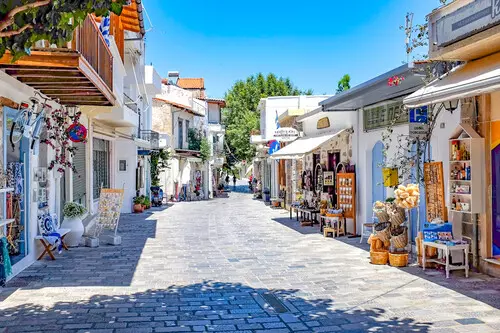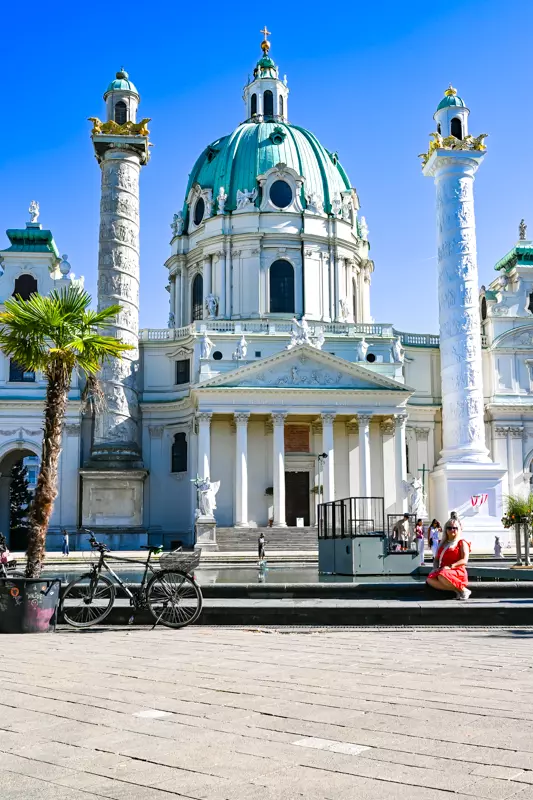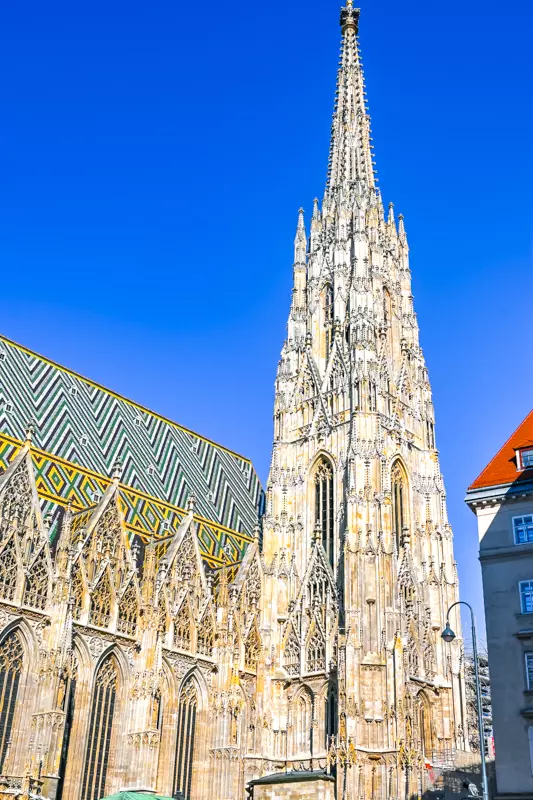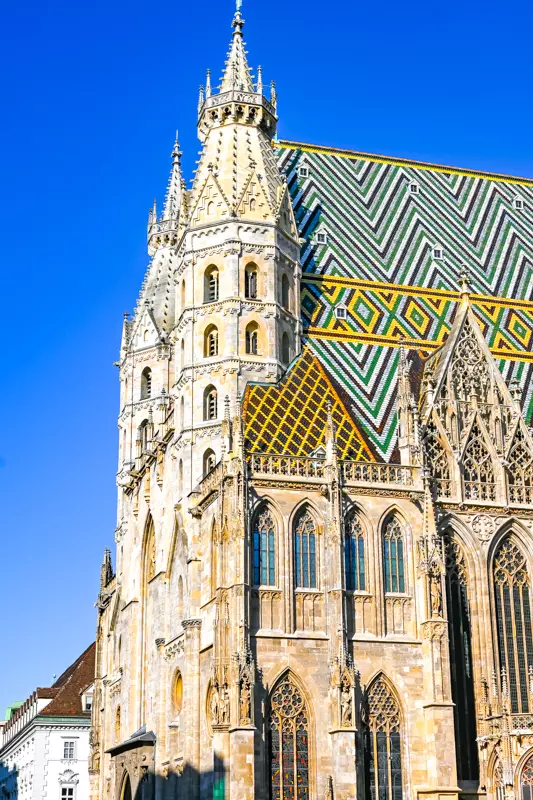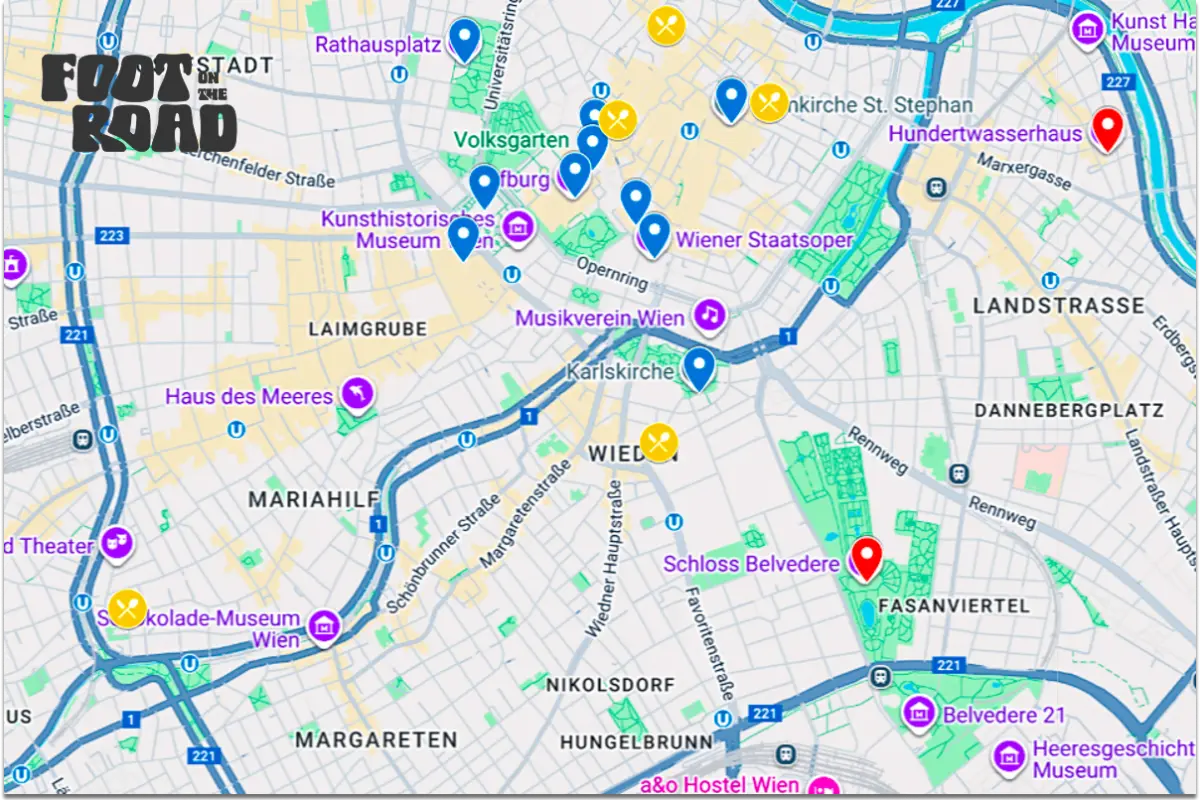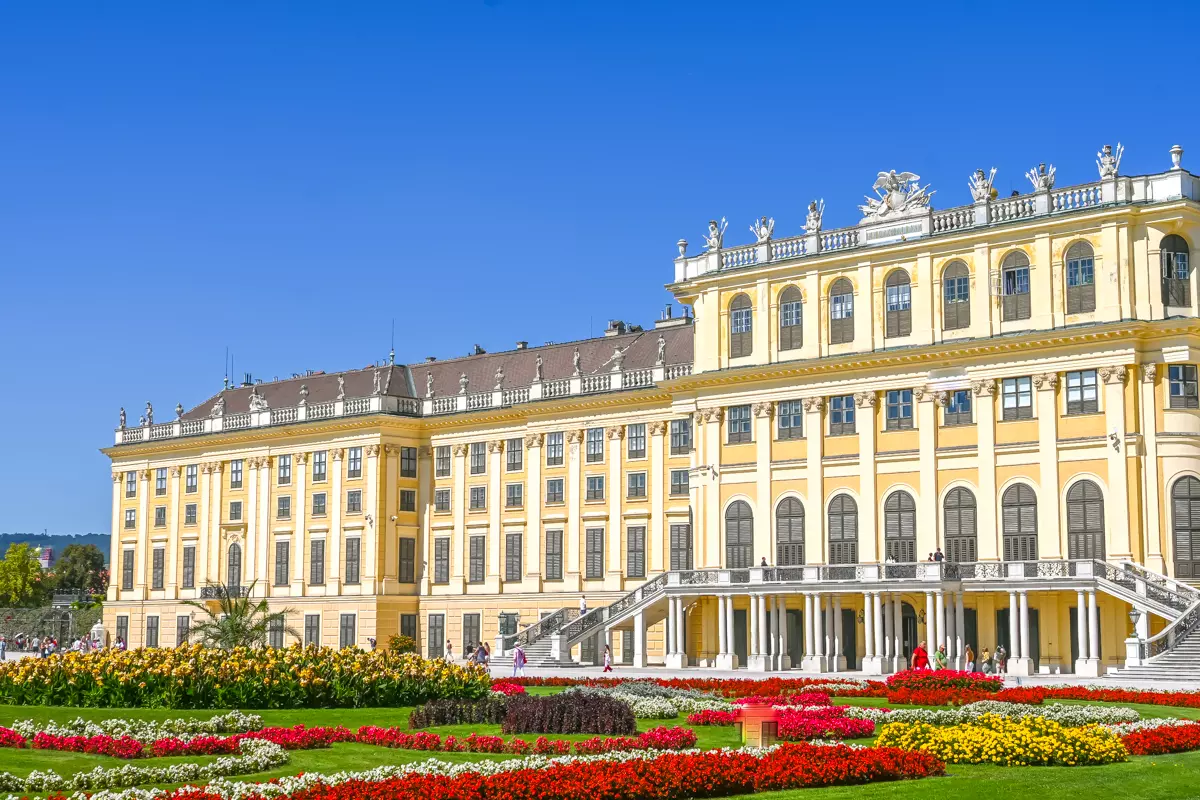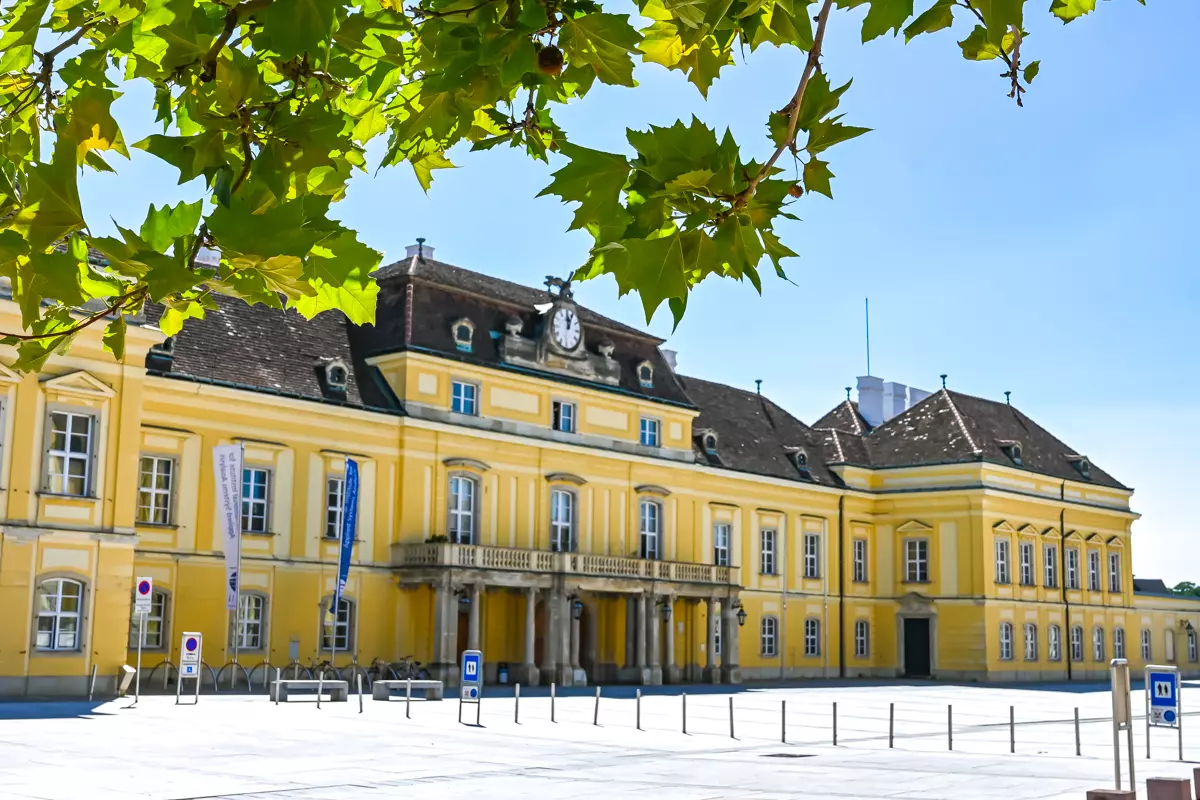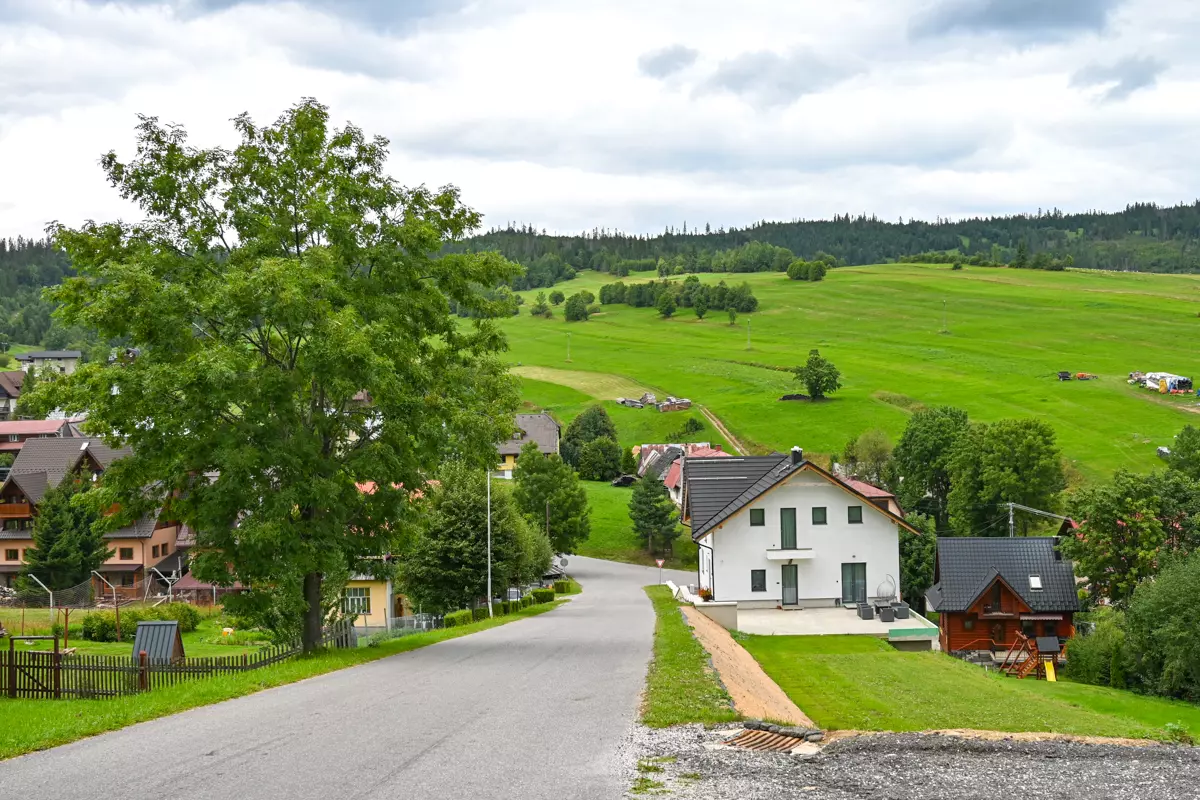48 Hours In Vienna: The Perfect Two-Day Itinerary
Planning a short trip to Austria’s capital and wondering what to see and do with limited time? This tried-and-true two-day itinerary will help you discover Vienna’s highlights and enjoy the city’s unique charm.
Even with only 48 hours in Vienna, you can dive into the imperial Habsburg legacy, explore world-class museums, wander through palaces and gardens, and savor the city’s legendary coffee culture. The itinerary is designed so that you can experience both the classical and modern spirit of Vienna—at a relaxed pace, yet without skipping the must-see sights.
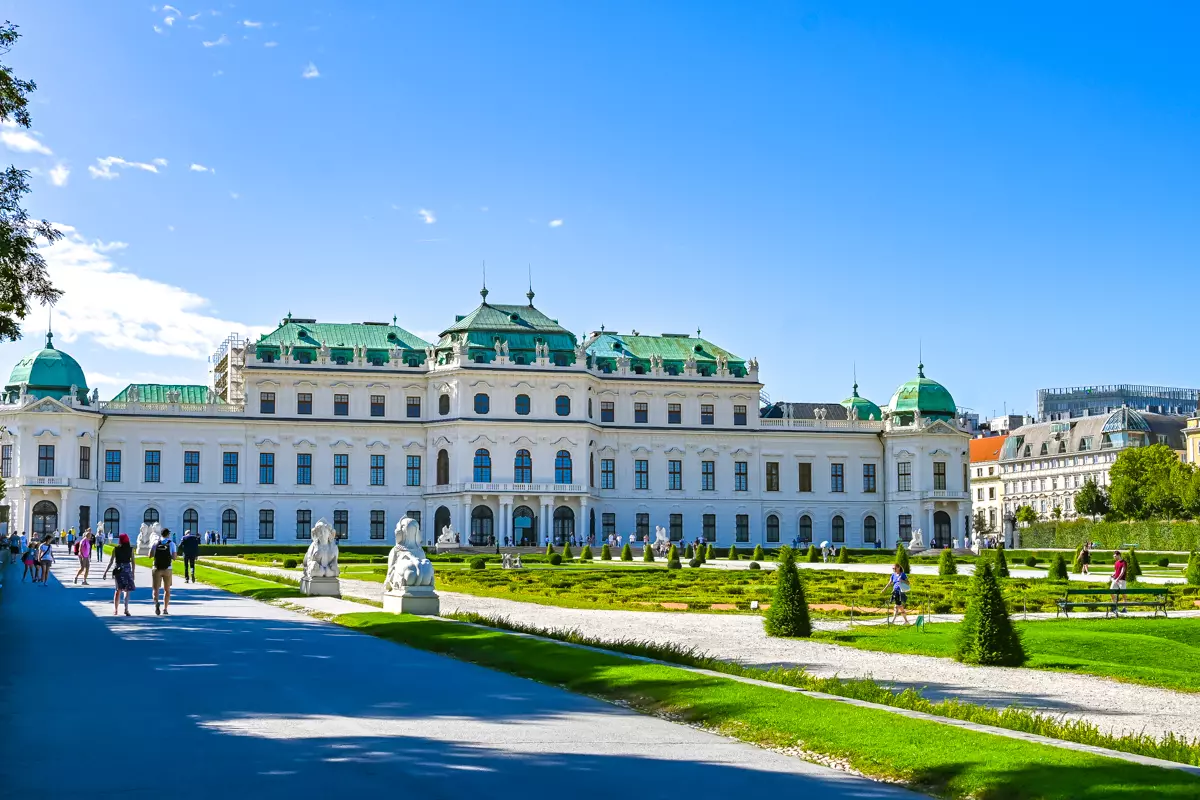
Day 1: St. Charles’s Church, State Opera & Historic Center Walk
St. Charles’s Church
Start your first day with a visit to one of Vienna’s most impressive Baroque churches – St. Charles’s Church. Built in the 18th century, it is famous for its massive dome, which you can reach by elevator to admire the frescoes up close. From the square in front, you’ll get a wonderful view of the church and its fountain – in my opinion, one of the most photogenic spots in the city.
By the way, concerts and light installations are often held around St. Charles’s Church, especially in summer. In the evenings, the square turns into a cozy meeting place where locals sit by the fountain with ice cream or coffee. If you want nicer photos, come back before sunset, when the sunlight beautifully illuminates the facade.
Vienna State Opera
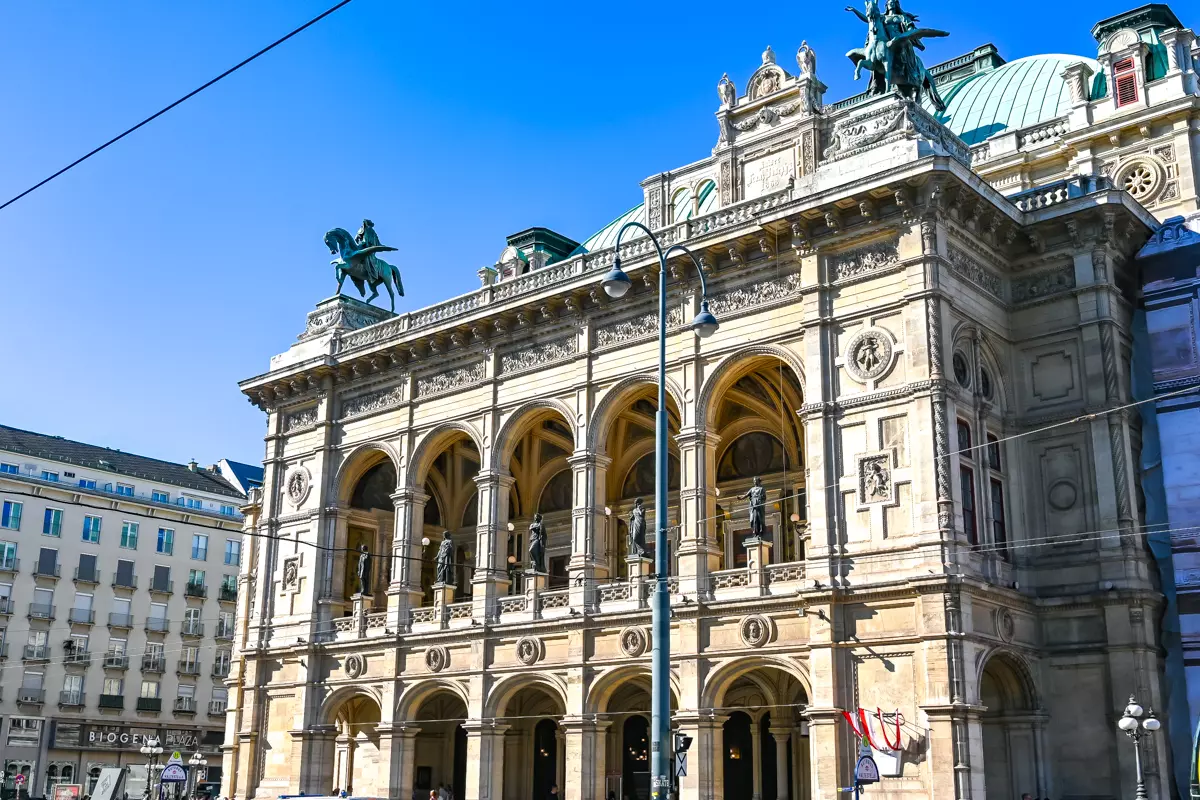
From Karlskirche, you’re only a 10-minute walk from the legendary Vienna State Opera. Even if you don’t plan to attend a performance, it’s worth admiring the grand facade.
If you have more time, I recommend booking a 45-minute guided tour online in advance to see the interior.
Or, if you’d like to see a performance, check out the last-minute standing tickets during the season. They cost only a few euros, and experiencing world-class opera at that price is truly worth it. Sadly, I didn’t manage to take advantage of this myself, as I was short on time.
In summer, performances are also screened live outside the Opera on a big screen – a fun alternative for those who want to enjoy Vienna’s musical spirit for free.
Tip: Standing tickets can be purchased online on the same day from 10 A.M., or in person at the dedicated counter 80 minutes before the performance. Be sure to arrive early, as these tickets sell out quickly. You’ll find more details about this option on the official Vienna State Opera website.
Albertina Museum
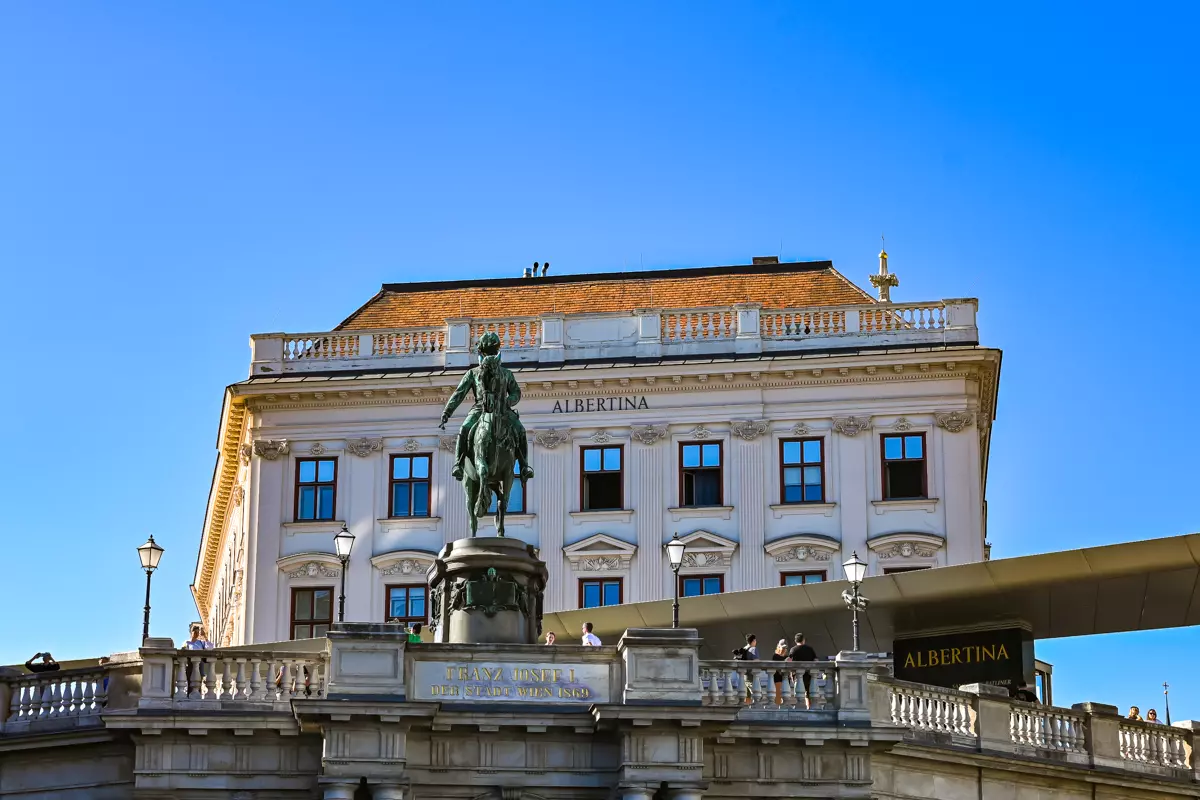
Your next stop is the Albertina Museum, famous not only for its classic collection (Monet, Picasso, Klimt) but also for its modern exhibitions. It’s one of Vienna’s most important museums, housed in a former Habsburg residence. The collection holds more than a million prints and 65,000 drawings – from Dürer to contemporary art.
If you don’t plan to go inside the museum, at least stop by the Albertina Terrace. It’s not a traditional viewing platform, but the view is definitely worth it. Built on the bastion of the old city walls, right next to the museum’s main entrance, it carries the historic spirit of Vienna. Along with the impressive statue of Archduke Albrecht, you’ll enjoy a wonderful view of the Vienna State Opera and Herbert von Karajan Square.
Here is what you shouldn’t miss in Albertina:
- Graphic Arts Collection – one of the richest in the world.
- Monet, Picasso, Klimt – the classics collection.
- Temporary Exhibitions – always interesting and diverse.
- Albertina Terrace – the Opera view.
St. Stephen’s Cathedral
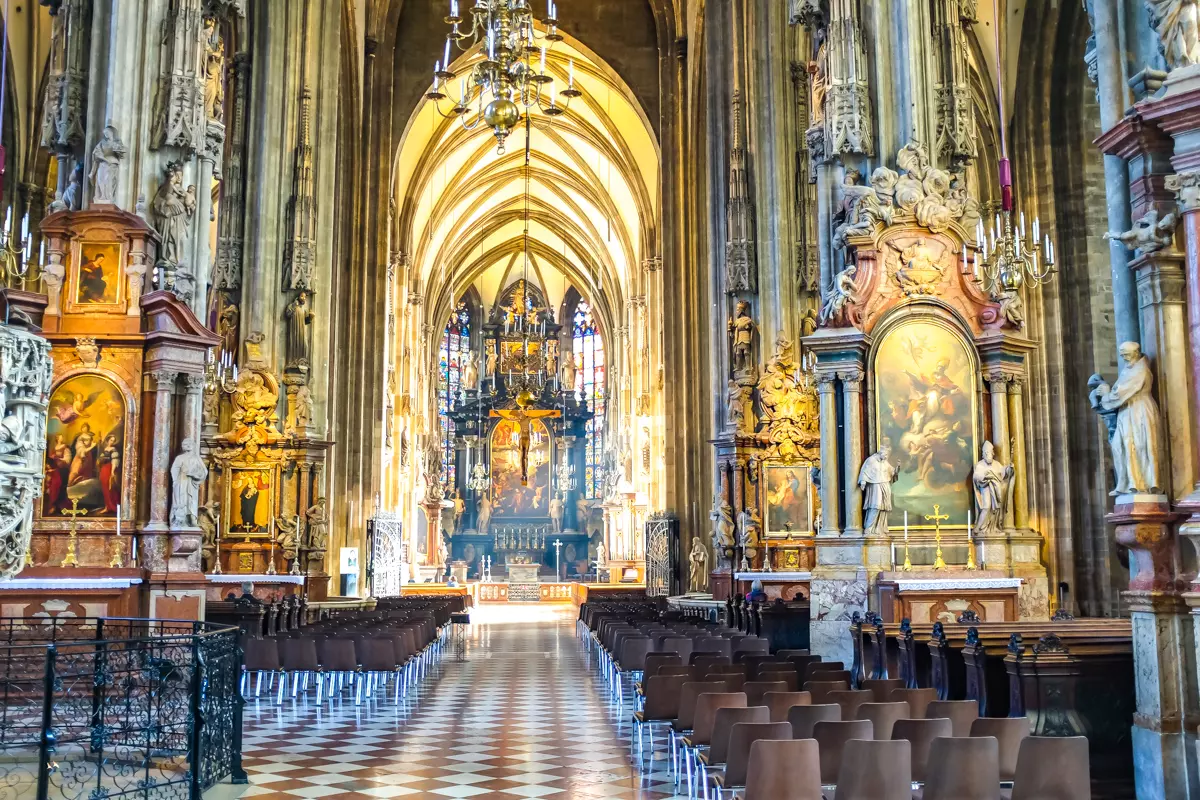
As you continue walking, you’ll arrive at the very heart of the city – St. Stephen’s Cathedral. Its Gothic tower, which has stood since the 13th century, is a true symbol of Vienna and one of the city’s main landmarks. Inside, you’ll find magnificent altars, stained-glass windows, and crypts where members of the Habsburg family are buried.
The cathedral is not only historic but also a living part of the city – services, concerts, and even special events take place here. If you want a special experience, climb the South Tower – from the top you’ll see a panorama of the entire old town and the Alps visible in the distance.
Here is a list of the main sights to see in St. Stephen’s Cathedral:
- South Tower – 343 steps up to a 136 m-high panorama.
- North Tower – the famous Pummerin bell.
- Catacombs – underground chambers with Habsburg burials.
- Main Nave – the central hall and stained-glass windows.
Sisi Museum
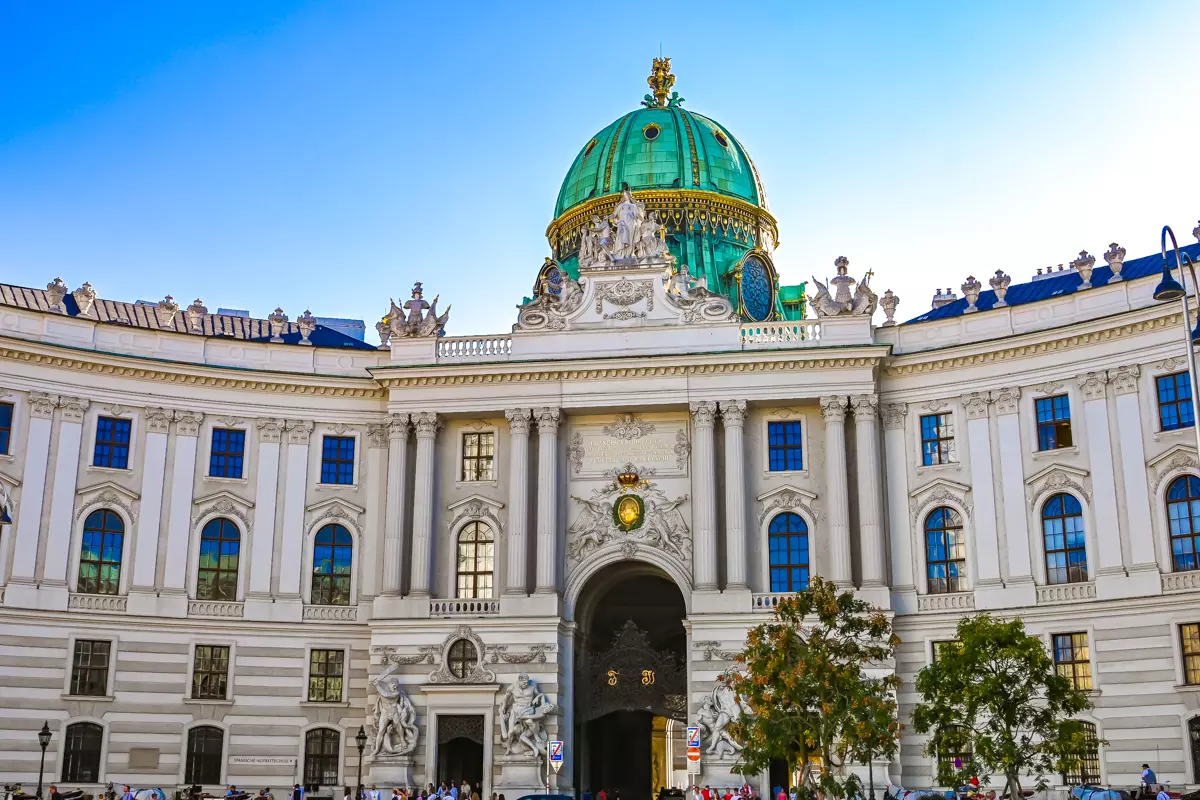
Continuing along my planned route, you’ll reach the Hofburg Palace complex, home to the famous Sisi Museum. Here you can delve into the life of Empress Elisabeth – from her childhood to her tragic death. On display are her personal belongings, dresses, jewelry, and letters that give you a glimpse into the daily life and mysterious character of this legendary empress.
The museum spaces are designed so that visitors not only see the exhibits but also feel the atmosphere of Sisi’s era. Interestingly, the story is not limited to luxury – it also highlights the empress’s melancholy, longing, and desire to escape her official duties. This makes the museum deeply human and sensitive.
Here is what you’ll see in the Sisi Museum:
- Personal belongings – including dresses and jewelry.
- Letters – personal correspondence and poetry
- Imperial Apartments – the rooms of the emperor and empress.
Good To Know: The museum is quite popular, so buy your tickets online in advance through the official website.
Imperial Treasury
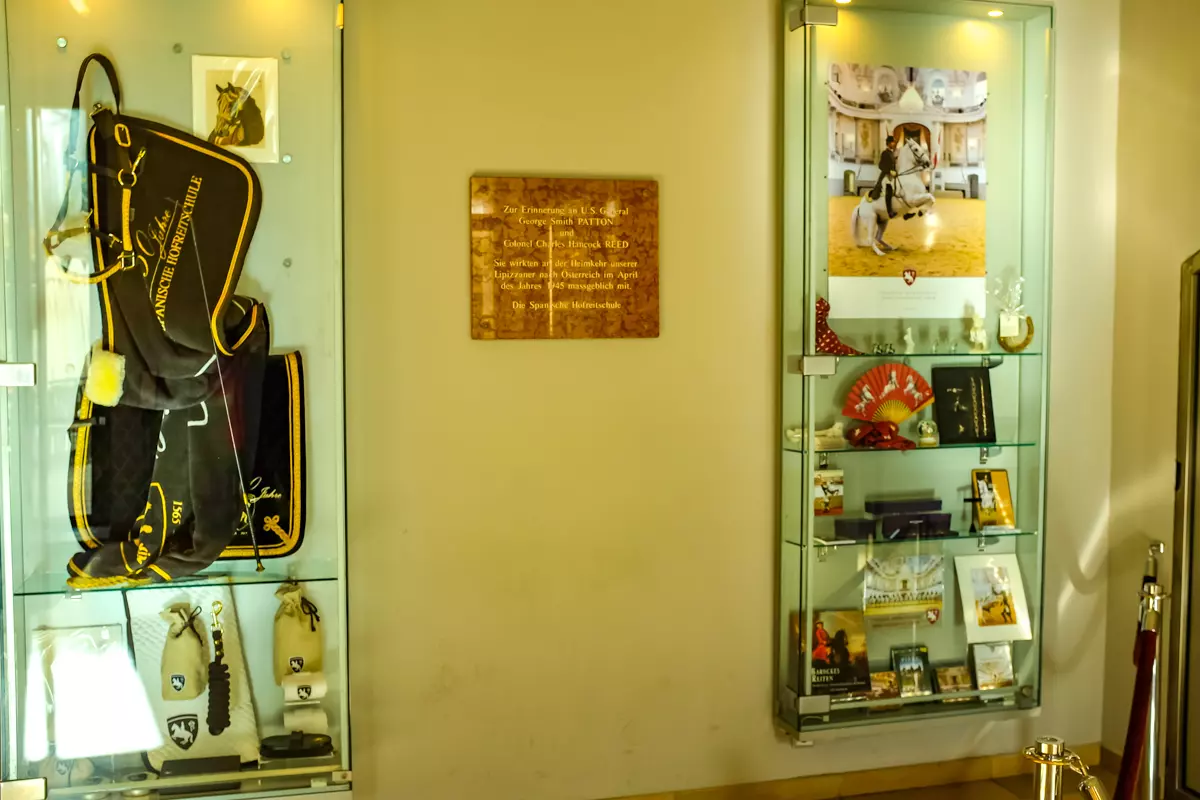
Just a few minutes’ walk from the Sisi Museum you’ll find the Imperial Treasury. This is where crowns, regalia, jewels, and symbols of the Holy Roman Empire are housed. It’s one of the richest collections in Europe, showing the immense power once held by the Habsburgs.
A stroll through the treasury halls leaves an impression even on those not particularly interested in history. The golden crowns, studded with precious stones, look as if they came from a fairy tale, and each piece comes with a historical explanation. It’s especially fascinating to see the jewels that were actually used in real coronations.
Here is what you’ll see in the Imperial Treasury:
- Austrian Imperial Crown – the crown of the Habsburg monarchy.
- Regalia of the Holy Roman Empire – symbols of imperial power.
- Religious relics and treasures – sacred objects and valuable artifacts.
- Coronation symbols – items used in coronation ceremonies.
Hofburg Palace
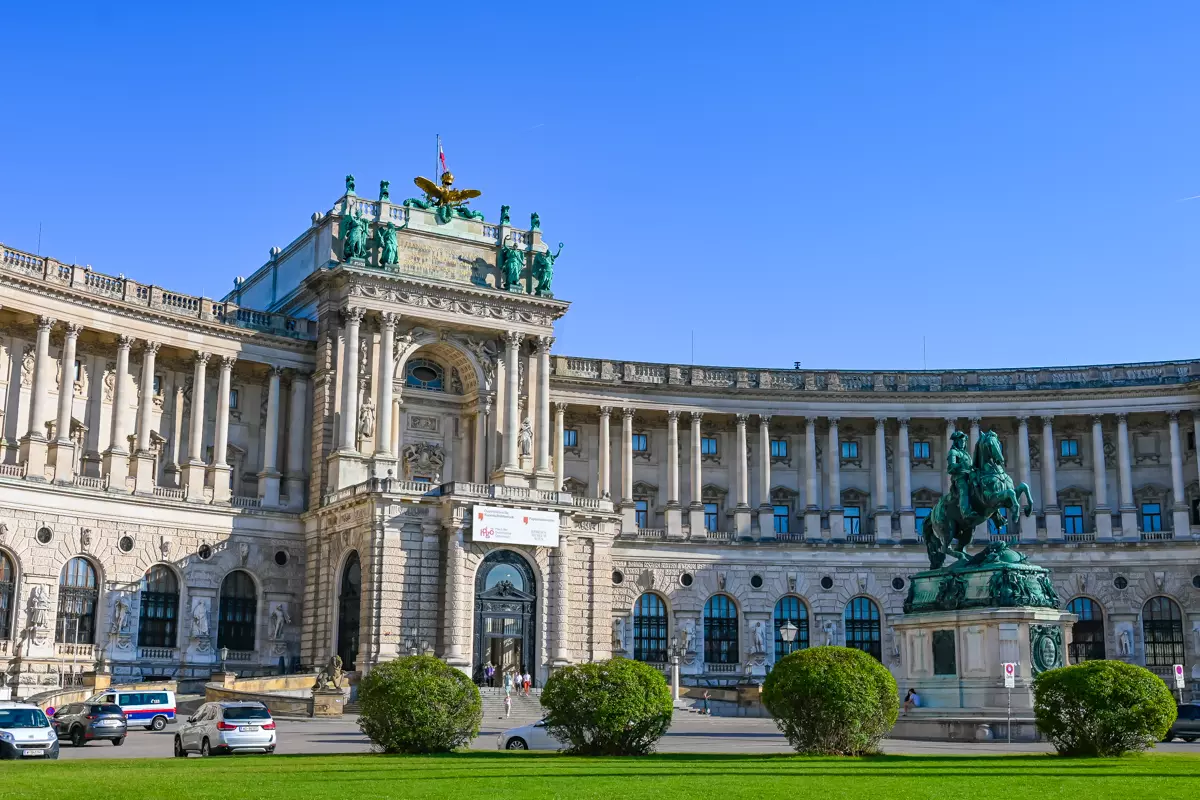
Next, take a walk around the Hofburg Palace to admire its impressive architecture from the outside. This vast imperial complex was the residence of the Habsburg dynasty for centuries. Here you’ll find the museums and spaces already mentioned – the Sisi Museum, the Imperial Treasury, and the Spanish Riding School – all conveniently located in one place. It was in this complex that the most important decisions were made, banquets and ceremonies were held, and official meetings took place.
Even if you don’t plan to visit the museum interiors, simply strolling through the courtyards and squares of the Hofburg is worth your time. Impressive facades, equestrian statues, and the constant city buzz are sure to leave an impression. Personally, I found it a bit too crowded, but I was traveling during the peak holiday season, so that was to be expected.
Good To Know: Depending on how many museums you want to see, plan about 2–3 hours here.
Discover: Hofburg Palace & Sisi Museum – Guided Tour.
Museum of Natural History

Next, head to one of the most beautiful and oldest natural history museums in the world. Built in the 19th century, the building itself is a work of art. Inside, you’ll find the famous Venus of Willendorf – a 30,000-year-old figurine – along with dinosaur skeletons and an impressive collection of minerals and meteorites.
The museum is especially appealing for those traveling with kids – the exhibitions are designed to be engaging for both children and adults. On top of that, the halls are so grand that even a simple walk through them leaves a strong impression.
Here is what you’ll see in the Natural History Museum:
- Venus of Willendorf – a 30,000-year-old figurine.
- Dinosaur skeletons – fossils of various prehistoric species.
- Meteorite collection – rare meteorites from around the world.
- Minerals and gemstones – precious and semi-precious stones on display.
Note: Plan at least 2.5–3 hours for the museum, especially if you’re traveling with children.
Rathausplatz

After leaving the museum, stop by Vienna’s Rathausplatz. The square is famous for its seasonal markets – in winter it hosts one of the most beautiful Christmas markets, while in summer it becomes a stage for concerts and open-air events. The Rathaus building itself is one of the most impressive examples of Neo-Gothic architecture in the city.
Even if no events are taking place, Rathausplatz is worth a visit. It’s a space where locals meet and tourists admire the grandeur of the building. The square becomes even more stunning in the evening when the facade is beautifully lit up. I was there as the sun was setting, and the whole square felt truly enchanting.
MuseumsQuartier

End your day at the MuseumsQuartier – a modern cultural quarter that houses the Leopold Museum, MUMOK, and more. It’s one of the largest cultural complexes in the world, where historic buildings meet contemporary architecture.
The courtyards are always buzzing with life – some people relax on colorful loungers, while others sip coffee or beer at outdoor cafes. The atmosphere is youthful and vibrant, making it the perfect place to unwind after a full day of sightseeing or to escape the crowds. If you have the time, step into at least one museum, but even without going inside, this place is well worth a visit.
Good To Know: You can purchase tickets for the various museums through Tiqets.
Day 2: Schönbrunn Palace, Belvedere, Hundertwasserhaus
Schönbrunn Palace
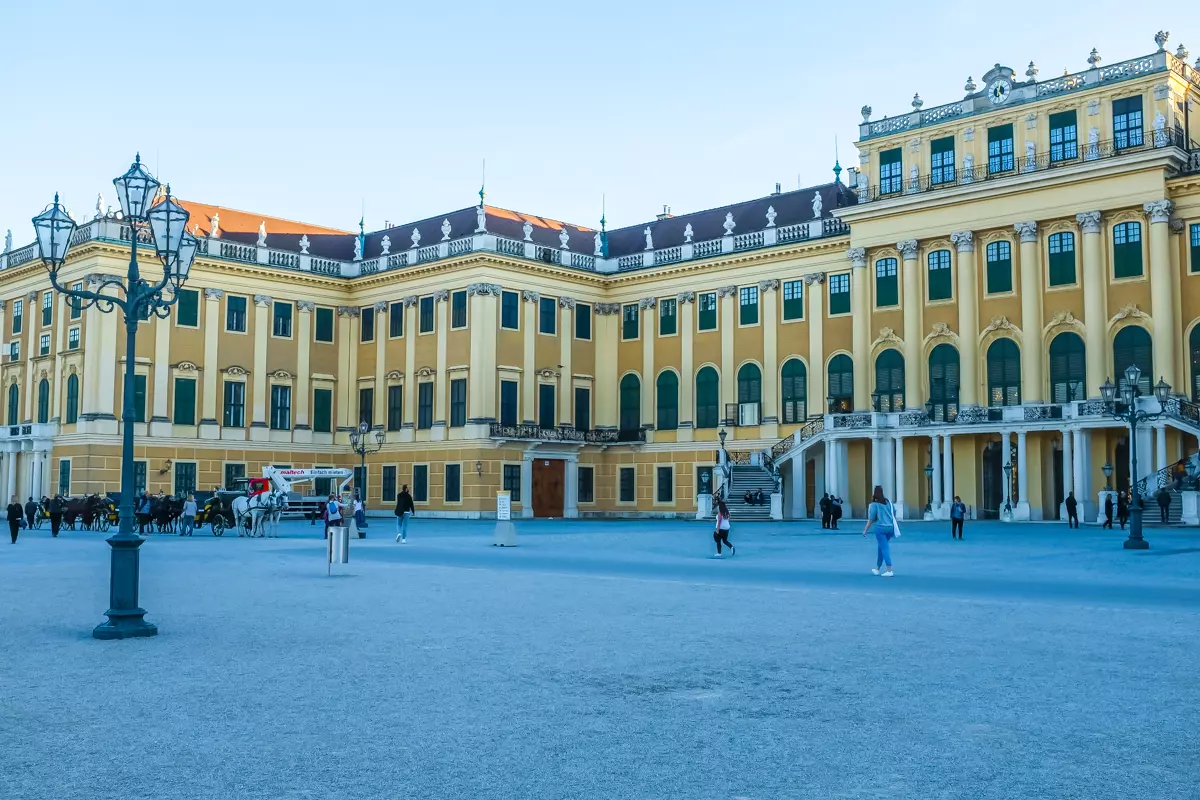
Start your second day with a visit to one of Vienna’s greatest treasures – Schönbrunn Palace. Once the Habsburgs’ summer residence, today it is one of the most visited attractions in all of Austria. The palace is famous for its imperial interiors, manicured gardens, orangeries, and even the oldest zoo in the world. Even if you’re not a big fan of museums, simply walking through the gardens makes a strong impression.
The complex is so large that you can choose between different ticket options – from a shorter tour covering the main state rooms to a longer route that includes more chambers and additional attractions. Be sure to also climb up to the Gloriette, where you’ll be rewarded with a stunning panorama of the entire park and the city of Vienna.
Here is what you shouldn’t miss in Schönbrunn Palace:
- Imperial Tour – the main state rooms.
- Grand Tour – a longer route with more rooms.
- Gardens & Gloriette – free gardens and the view from the hilltop.
- Zoo – the oldest zoo in the world, home to rare pandas.
Good To Know: It’s best to buy your tickets online in advance – the most popular time slots sell out quickly. Access to the gardens is free, but some attractions require an extra fee. Plan at least 2–3 hours for the palace itself, and half a day if you also want to explore the gardens, the zoo, and the museums.
Also read: How To Get To Schönbrunn Palace In Vienna
Belvedere Palace
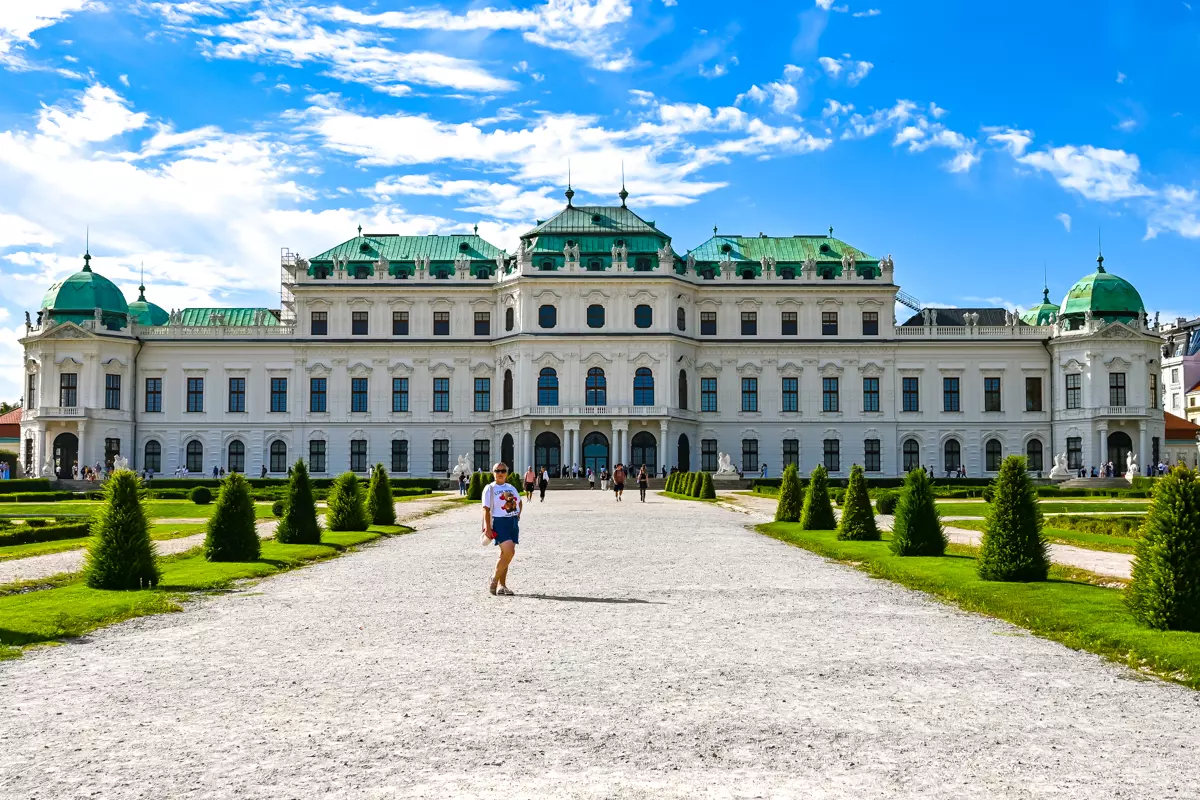
From Schönbrunn, head back toward the center and stop at another Baroque masterpiece – Belvedere Palace. This ensemble consists of the Upper and Lower Belvedere, the Orangery, and stunning gardens. Here you’ll find not only remarkable architecture but also one of Austria’s finest art collections, including Klimt’s The Kiss as well as works by Monet and Renoir.
A stroll through the gardens connecting the two palaces feels truly imperial. Symmetrical paths, fountains, and sculptures create one of Vienna’s most beautiful panoramas – the so-called Canaletto View. It’s a place where imperial grandeur meets artistic genius.
Here is what you shouldn’t miss in Belvedere:
- Upper Belvedere – Klimt’s The Kiss and other masterpieces.
- Lower Belvedere – temporary exhibitions and the Orangery.
- Belvedere Gardens – Baroque gardens with city views.
Good To Know: Entry to the gardens is free, but I recommend buying a ticket to fully experience Belvedere Palace. Plan 2–3 hours for the visit.
Hundertwasserhaus
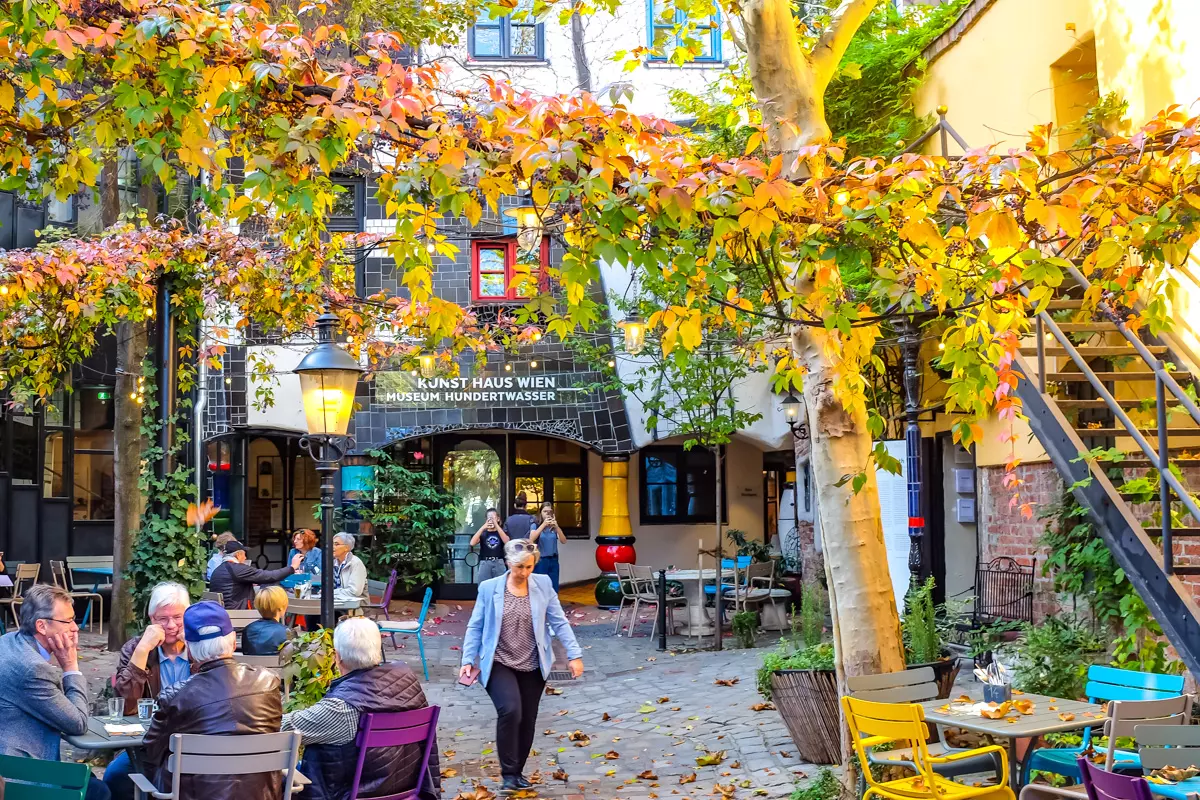
After visiting the two palaces, it’s time to visit a completely different kind of attraction – the Hundertwasserhaus. I didn’t get the chance to visit this site myself. But my travel buddy Marius recommended adding it to the second day’s itinerary as a great place for a quieter evening in Vienna.
This colorful building, with its wavy forms and green terraces, stands out from traditional Viennese architecture. Designed by the artist Friedensreich Hundertwasser, it symbolizes creativity, harmony between nature and architecture, and free artistic expression.
The building contains private apartments, so it can only be visited from the outside. Nearby, you’ll also find Hundertwasser Village and the KunstHausWien – a museum dedicated to Hundertwasser’s work, where you can explore his creations in more detail.
Here is what you can do at Hundertwasserhaus:
- Admire the exterior – colors, wavy lines, and trees on the roofs.
- Photography – one of the most photogenic spots in Vienna.
- KunstHausWien – just a few minutes’ walk, a museum about Hundertwasser’s work. Tickets can be purchased here.
- Hundertwasser Village – a unique arcade with small shops and cafes, designed in Hundertwasser’s style.
Vienna 48-Hour Itinerary: On a Map
How to Use the Map: To explore the map, click on the image. A map window will open with various icons. To learn more about a specific location, simply click on its icon.
If you want save the map for future use, click the star next to its title. It will be added to your Google Maps account. You can access it later by opening Google Maps, selecting Your Places, and navigating to the Maps section. I hope this map will be useful for your travels. Safe journey!
How To Get To Vienna, Austria
Getting to Vienna is convenient whether you’re traveling by plane, train, bus, or even car – it all depends on where you’re coming from. As one of Europe’s major capitals, the city is very well connected, and once you arrive, you’ll find a reliable public transportation system. The city has an excellent network of metros, trams, and buses, making it very easy to get from one place to another.
By Plane
Vienna International Airport is the main gateway to Austria and one of the busiest airports in Central Europe, serving millions of passengers each year. Thanks to its central location, Vienna is well connected with almost every major European city, as well as destinations worldwide.
Many international airlines, including Lufthansa, Austrian Airlines, Turkish Airlines, and Emirates, operate regular flights to Vienna. Low-cost carriers such as Ryanair, Wizz Air, and EasyJet also offer budget-friendly options from various European cities, making it easy to find a flight that suits both your schedule and your budget.
Vienna Airport is modern and compact, with plenty of cafes, shops, and luggage storage, so even a longer layover here is comfortable. The airport is only 20 km from the city center, and getting into town is quick and easy:
- City Airport Train – the fastest option, reaching the center in just 16 minutes.
- S-Bahn (S7) – a cheaper alternative, taking around 25 minutes.
- Buses – connecting the airport with different districts, about 30–40 minutes.
- Taxi / Uber / Bolt – the most convenient but also the most expensive.
By Train
If you’re coming from other European cities like Prague, Budapest, or Munich, the train is a quick and comfortable option. The main station, Wien Hauptbahnhof, connects directly to the metro and trams, so you can easily reach any part of the city.
Trains run frequently, giving you flexibility to choose times that suit your plans. Plus, traveling by train allows you to enjoy Austria’s scenic landscapes along the way.
By Bus
Buses are often a cheaper alternative to trains. Companies like FlixBus and other international operators connect to Vienna, with most services stopping at the Erdberg International Busterminal (U3 metro line) and some also serving Hauptbahnhof.
Although the journey may take longer, buses are a good budget-friendly option. Most offer Wi-Fi, power outlets, and comfortable seats, so the trip is quite pleasant.
By Car
If you’re driving, keep in mind that most of Vienna has paid parking zones, and traffic in the old town is restricted. Driving itself is straightforward, but patience is needed during peak hours.
Since we traveled around Central Europe by car, parking in big cities was often a challenge. In Vienna’s central area, you can usually park for only two hours in one spot, and most hotels have limited parking spaces.
The best option is either to stay outside the city center and use the metro, trams to get around, or use Park & Ride lots, where you can leave your car for 24 hours at a very reasonable price. Since we stayed at Holiday Inn Vienna City by IHG, we managed to find parking garage just a 10-minute walk from the hotel.
I’ll admit, getting into the garage was a bit tricky because of all the one-way streets, so I’ve included a photo below to make it easier for you to find the entrance. Parking cost me €10, which I think is a great deal considering it was so close to the main attractions.
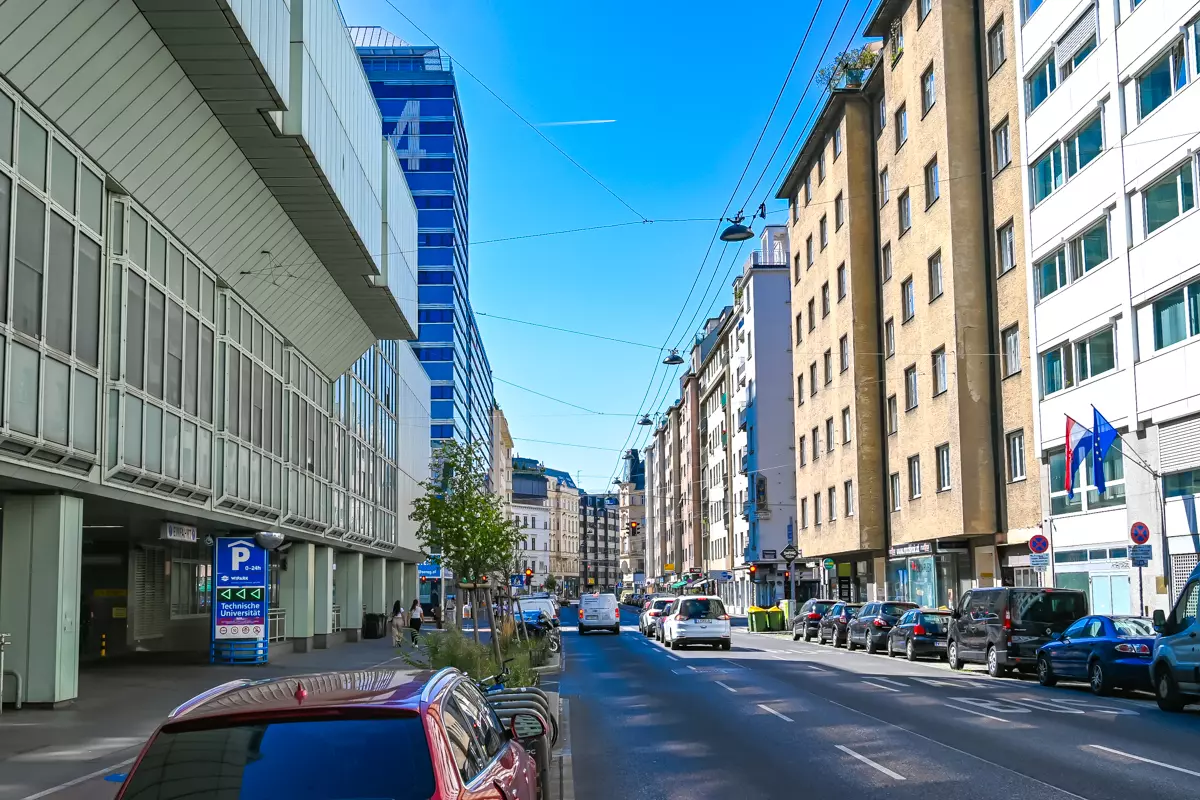
Best Time To Visit Vienna
The best time to visit Vienna is from April to mid-June and again in September–October. During these months, the weather is pleasantly warm but not too hot – perfect for strolling around, visiting museums, or relaxing in garden cafes.
In summer, especially July and August, the city sees the highest number of tourists, which means long lines at the most popular attractions. I visited Vienna at the end of summer for two days, and the city was crowded with tourists. For this reason, I skipped most of the palaces and museums, as visiting them would have been more stressful than enjoyable.
Average Temperature
Where To Eat In Vienna
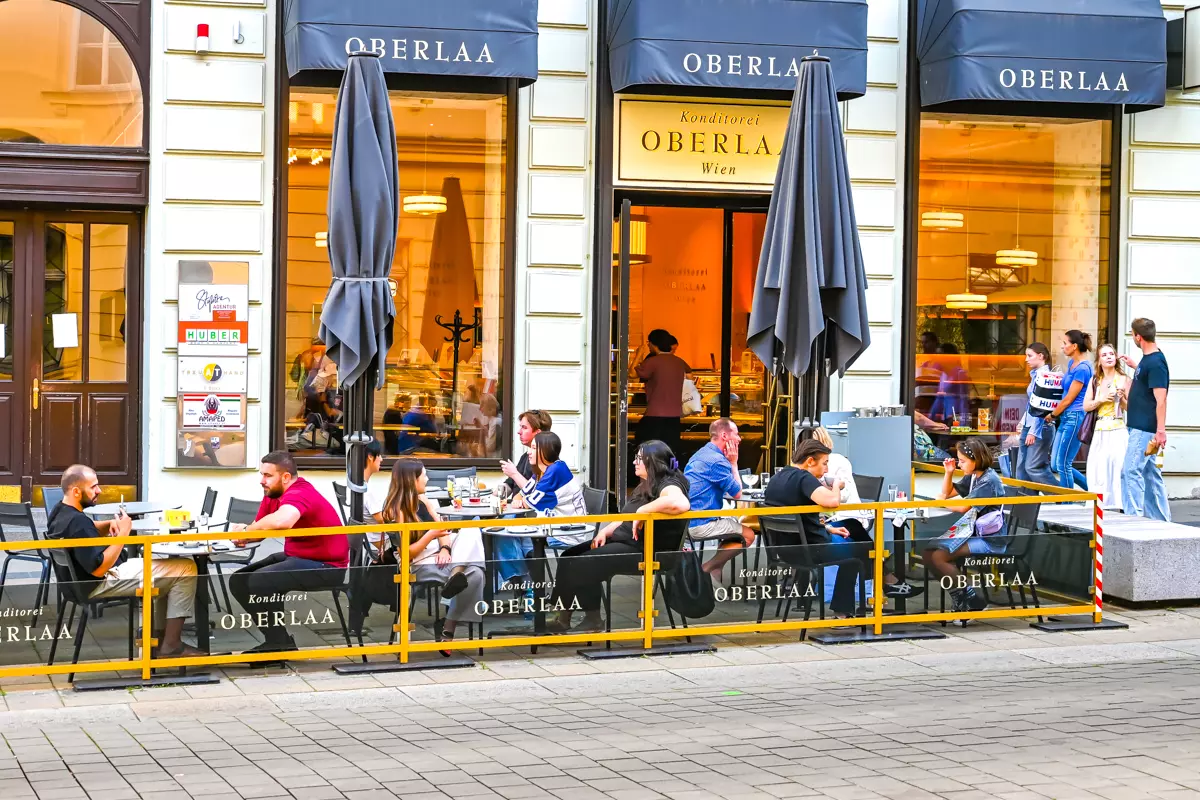
Vienna is famous for its schnitzel and Sachertorte, but the city has so much more to offer when it comes to food. You’ll find everything from classic Austrian dishes to modern twists – in cozy family-run restaurants as well as elegant cafes.
Figlmüller
If there’s one place you absolutely must visit for Wiener Schnitzel, it has to be Figlmüller. The restaurant has been around for more than a century, and their schnitzel is so large it nearly covers the entire plate. The atmosphere is warm, the service friendly. Just make sure to book a table in advance – otherwise, you might end up waiting in a long line outside.
Bauernbräu
Step into Bauernbräu for hearty Austrian classics served in a rustic setting. Generous portions and authentic flavors make it the perfect spot if you want to taste real Viennese home cooking.
Wiener Wiazhaus
Locals love Wiener Wiazhaus for its cozy, tavern-like vibe and traditional comfort food. It’s a great place to try authentic dishes in an unpretentious, welcoming atmosphere.
Joyce Cafe Restaurant
Looking for something more modern? Joyce Cafe Restaurant blends Austrian and international flavors in a relaxed setting. With a varied menu and easygoing vibe, it’s perfect for a meal or to unwind after sightseeing.
Demel
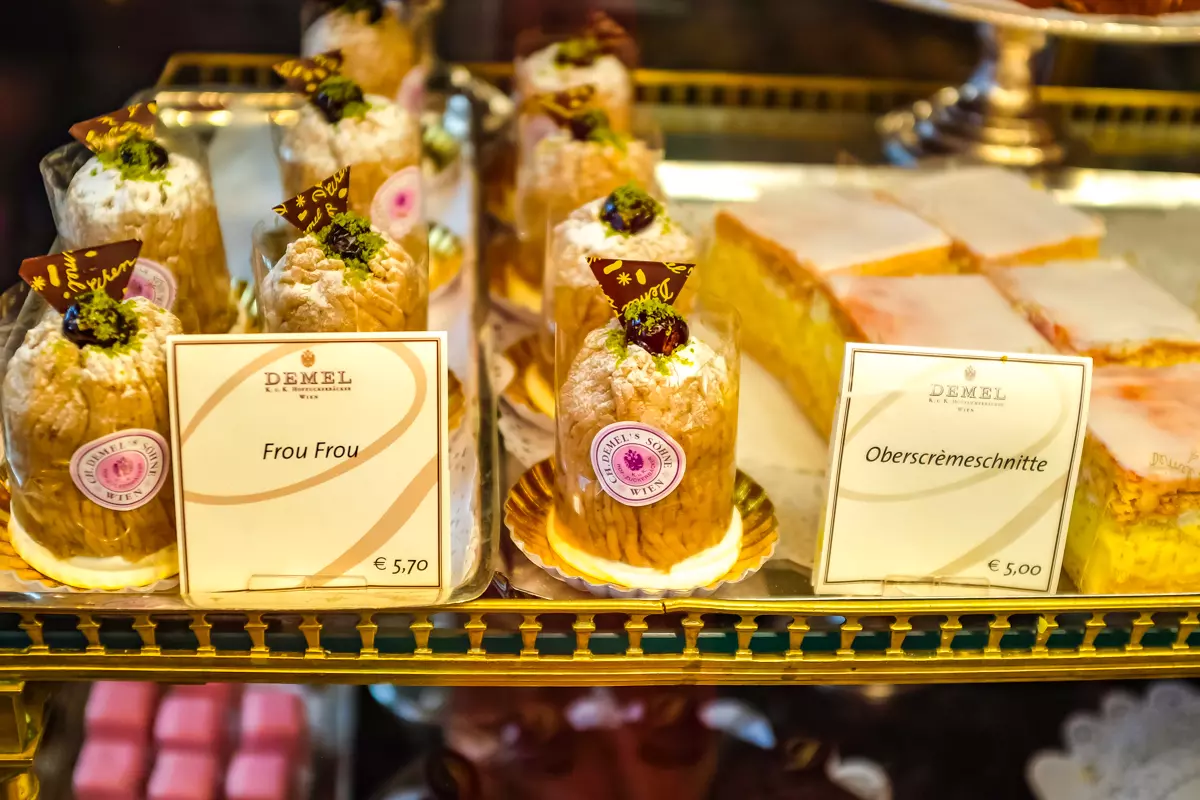
Founded in 1786, Demel is a legendary confectionery and cafe where history and flavor come together. Famous for its refined desserts, traditional cakes, and elegant interiors, Demel is a must-visit for anyone wanting to experience Vienna’s rich dessert tradition. Don’t miss the apple strudel – it’s worth every bite.
Where To Stay In Vienna
Vienna offers a wide range of accommodation – from budget-friendly hotels to luxurious stays in historic buildings. Here are my recommendations for different budgets to help you choose more easily.
Budget Hotels
- B&B HOTEL Wien-Heiligenstadt – A practical and affordable option with good transport connections to the city center. Clean, simple, and reliable for budget-conscious travelers.
- Hotel Caroline – A cozy mid-budget hotel with spacious rooms and a reputation for friendly service. Slightly outside the very center, but well connected by public transport.
Mid-Range Hotels
- Superbude Wien Prater – A stylish hotel with a modern vibe, located near the Prater amusement park. Known for its fun design and laid-back atmosphere.
- I stayed at Holiday Inn Vienna City by IHG, and I can say it’s in a great location. Close to the center but tucked away in a calmer neighborhood, so it’s easy to get around while still having a comfortable place to return to. The rooms are clean and modern, and the service is friendly and helpful. With its mix of comfort, quality, and value, it’s a place I’d happily recommend for anyone exploring Vienna.
Luxury Hotels
- SO/ Vienna – A modern luxury hotel with bold design and stunning panoramic views of the city. Its rooftop restaurant and bar are among the highlights.
- Hotel Sans Souci Wien – Located near the MuseumsQuartier, this elegant boutique hotel offers spacious rooms, a renowned spa, and impeccable service.
Discover: Top Cruises & Boat Tours in Vienna.
How To Get Around Vienna
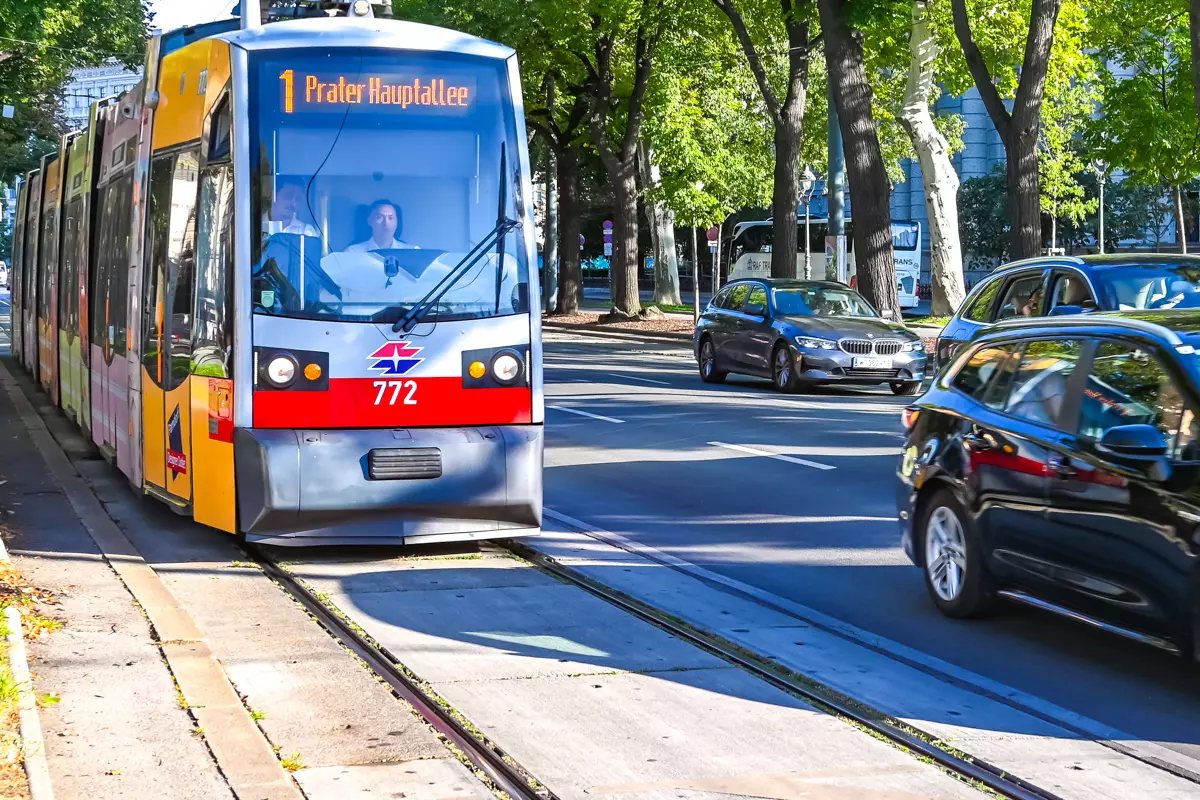
Vienna is best explored on foot, especially in the historic center where most of the main sights are close together. But the city also has an excellent public transport system – metro, trams, buses, and even suburban trains – so getting anywhere is simple and fast.
By Metro
The Vienna metro (U-Bahn) is the fastest and most convenient way to get around. The system has five lines (U1–U6, with no U5), covering all the key areas of the city – from St. Stephen’s Cathedral to Schönbrunn Palace. Trains run from 5 A.M. until midnight, and on Fridays and Saturdays they run 24 hours.
A single ticket costs about €2.40, but the best value is to buy a 24/48/72-hour pass or the Vienna City Card.
By Tram
Vienna’s tram network is one of the biggest in the world. It’s not just a convenient way to get around, but also a great way to see the city above ground. Trams run from early morning until late evening, and some routes continue at night. Tickets are the same as for the metro.
By Bus
Buses are most useful for reaching areas not directly served by metro or trams. They run frequently and cover even the outer districts. Night buses operate after midnight, once the metro closes.
By Taxi & Ride-Hailing
Taxis in Vienna are pretty expensive, but they’re handy if you’re traveling at night or with luggage. Uber and Bolt are also widely available and often cheaper than official taxis.
Also read: Best Day Trips From Vienna By Train
FAQs About 48 Hours In Vienna
Yes! The metro, trams, and buses run frequently and reliably. The best option is to buy a 24/48/72-hour ticket, since they quickly pay for themselves.
With 48 hours in Vienna, you can try the perfect two-day itinerary. Explore the historic center, visit a palace or two, and enjoy Vienna’s famous coffeehouse culture.
Spring and autumn are ideal – the weather is pleasant and there are fewer tourists. Summer brings lots of events but also bigger crowds. In winter, the city is famous for its magical Christmas markets.
Dining out and hotels can be pricier compared to other destinations, but there are plenty of mid-range options, and public transport is very affordable.
Vienna is often ranked as one of the safest cities in Europe. Just use common sense – keep an eye on your belongings in busy tourist spots.
If you plan to see a lot of museums and attractions in a short time, the Vienna Pass can save you money. Plus, it includes skip-the-line entry to many of the most popular sights.
Book your flight
For the best flight deals, I always rely on Skyscanner. Features like Multi-city and Explore Everywhere help me uncover incredible travel opportunities.
Rent a car
Discovercars is my top choice for comparing car rental prices for any road trip around the world. The booking experience is always smooth and easy.
Travel insurance
SafetyWing provides affordable travel medical insurance with global coverage, perfect for digital nomads and long-term travelers.
Book Tours & Attractions
Experiencing a destination to the fullest is easier with a well-planned itinerary. I use GetYourGuide for guided tours and Tiqets for quick access to museum and amusement park tickets.
Protect yourself online by VPN
No matter where I go, I always use NordVPN for secure browsing and to ensure I can access websites that might be blocked in certain countries.
Disclosure: I only suggest companies that I personally rely on. If you use the affiliate links in my posts to book services, I’ll earn a small commission, with no extra cost to you.
Tried 48 Hours in Vienna: The Perfect Two-Day Itinerary? Drop your favorite moments in the comments!
Share on

Hi, I’m Evelina, a travel enthusiast who loves nature, peace, and authentic places. I cherish the freedom to explore and learn with each adventure, whether it’s hiking trails, stunning beaches, natural parks, unique architecture, or rich cultural heritage. I hope my experiences inspire you to embark on your own journeys!
